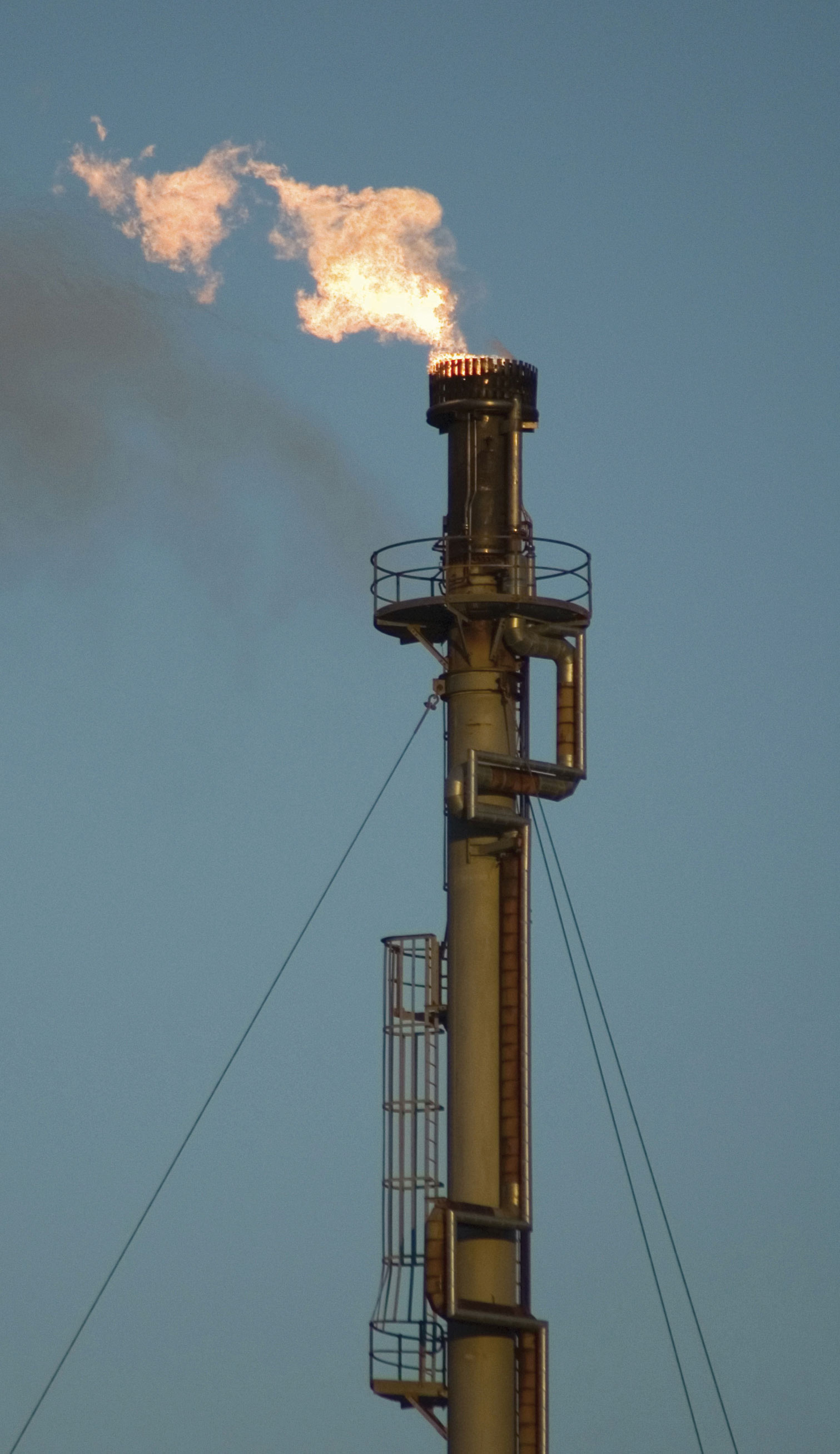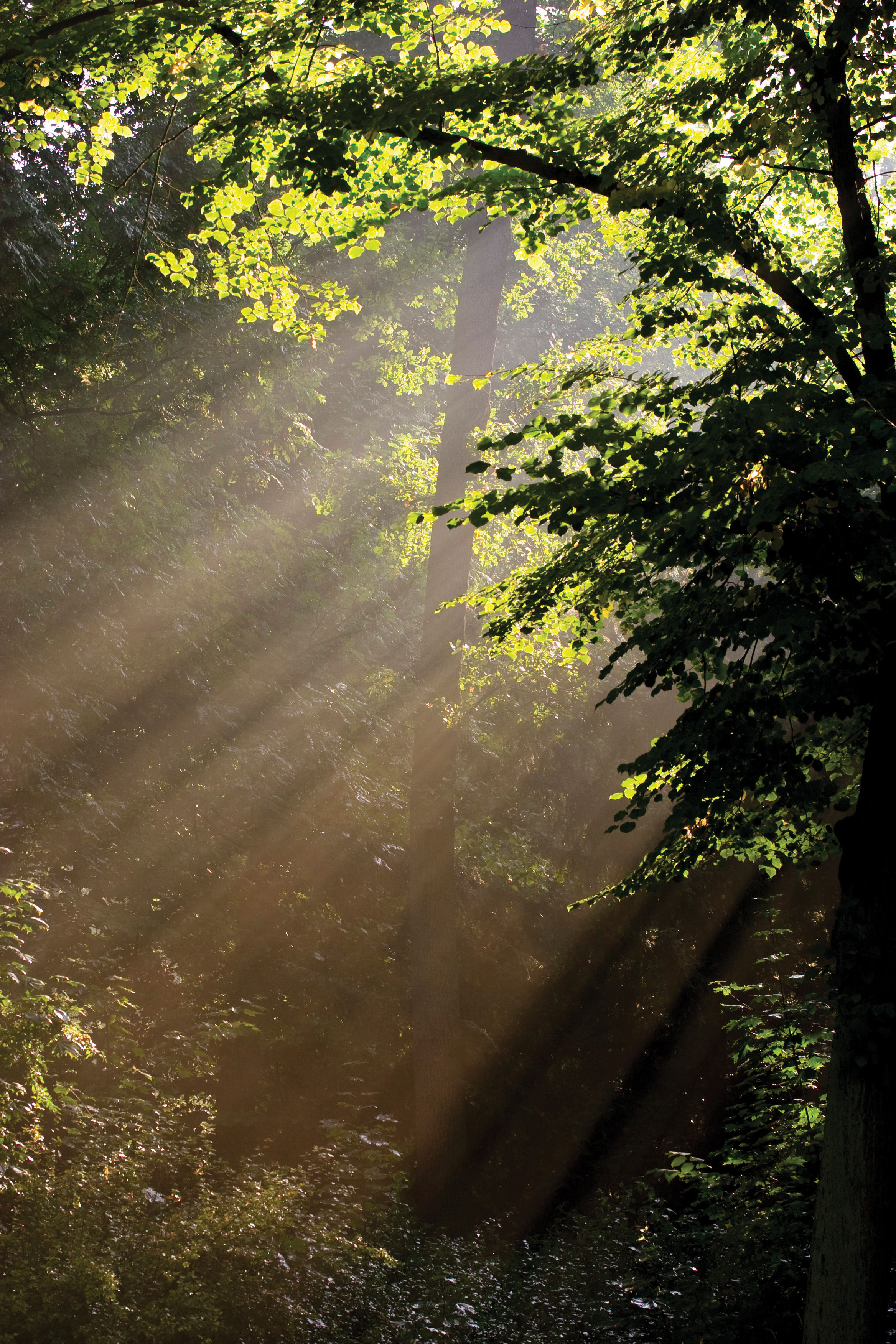This is “Redox Reactions in Organic Chemistry and Biochemistry”, section 5.6 from the book Introduction to Chemistry: General, Organic, and Biological (v. 1.0). For details on it (including licensing), click here.
For more information on the source of this book, or why it is available for free, please see the project's home page. You can browse or download additional books there. To download a .zip file containing this book to use offline, simply click here.
5.6 Redox Reactions in Organic Chemistry and Biochemistry
Learning Objective
- Identify oxidation-reduction reactions with organic compounds.
Oxidation-reduction reactions are of central importance in organic chemistry and biochemistry. The burning of fuels that provides the energy to maintain our civilization and the metabolism of foods that furnish the energy that keeps us alive both involve redox reactions.
Figure 5.5 The Burning of Natural Gas

The burning of natural gas is not only a combustion reaction but also a redox reaction. Similar reactions include the burning of gasoline and coal. These are also redox reactions.
© Thinkstock
All combustion reactions are also redox reactions. A typical combustion reaction is the burning of methane, the principal component of natural gas (Figure 5.5 "The Burning of Natural Gas").
CH4 + 2O2 → CO2 + 2H2OIn respirationThe biochemical process by which the oxygen we inhale oxidizes foodstuffs to carbon dioxide and water., the biochemical process by which the oxygen we inhale in air oxidizes foodstuffs to carbon dioxide and water, redox reactions provide energy to living cells. A typical respiratory reaction is the oxidation of glucose (C6H12O6), the simple sugar we encountered in the chapter-opening essay that makes up the diet of yeast:
C6H12O6 + 6O2 → 6CO2 + 6H2OOrganic chemists use a variety of redox reactions. For example, potassium dichromate (K2Cr2O7) is a common oxidizing agent that can be used to oxidize alcohols (symbolized by the general formula ROH). The product of the reaction depends on the location of the OH functional group in the alcohol molecule, the relative proportions of alcohol and the dichromate ion, and reaction conditions such as temperature. If the OH group is attached to a terminal carbon atom and the product is distilled off as it forms, the product is an aldehyde, which has a terminal carbonyl group (C=O) and is often written as RCHO. One example is the reaction used by the Breathalyzer to detect ethyl alcohol (C2H5OH) in a person’s breath:
3C2H5OH + Cr2O72− + 8H+ → 3CH3CHO + 2Cr3+ + 7H2OIf the product acetaldehyde (CH3CHO) is not removed as it forms, it is further oxidized to acetic acid (CH3COOH). In this case, the overall reaction is as follows:
3C2H5OH + 2Cr2O72− + 16H+ → 3CH3COOH + 4Cr3+ + 11H2OIn this reaction, the chromium atom is reduced from Cr2O72− to Cr3+, and the ethanol is oxidized to acetic acid.
When the OH group of the alcohol is bonded to an interior carbon atom, the oxidation of an alcohol will produce a ketone. (The formulas of ketones are often written as RCOR, and the carbon–oxygen bond is a double bond.) The simplest ketone is derived from 2-propanol (CH3CHOHCH3). It is the common solvent acetone [(CH3)2CO], which is used in varnishes, lacquers, rubber cement, and nail polish remover. Acetone can be formed by the following redox reaction:
3CH3CHOHCH3 + Cr2O72− + 8H+ → 3(CH3)2CO + 2Cr3+ + 7H2OAs we have just seen, aldehydes and ketones can be formed by the oxidation of alcohols. Conversely, aldehydes and ketones can be reduced to alcohols. Reduction of the carbonyl group is important in living organisms. For example, in anaerobic metabolismA biochemical process that takes place in the absence of oxygen., in which biochemical processes take place in the absence of oxygen, pyruvic acid (CH3COCOOH) is reduced to lactic acid (CH3CHOHCOOH) in the muscles.
CH3COCOOH → CH3CHOHCOOH(Pyruvic acid is both a carboxylic acid and a ketone; only the ketone group is reduced.) The buildup of lactic acid during vigorous exercise is responsible in large part for the fatigue that we experience.
In food chemistry, the substances known as antioxidantsA substance in foods that acts as a reducing agent. are reducing agents. Ascorbic acid (vitamin C; C6H8O6) is thought to retard potentially damaging oxidation of living cells. In the process, it is oxidized to dehydroascorbic acid (C6H6O6). In the stomach, ascorbic acid reduces the nitrite ion (NO2−) to nitric oxide (NO):
C6H8O6 + 2H+ + 2NO2− → C6H6O6 + 2H2O + 2NOIf this reaction did not occur, nitrite ions from foods would oxidize the iron in hemoglobin, destroying its ability to carry oxygen.
Tocopherol (vitamin E) is also an antioxidant. In the body, vitamin E is thought to act by scavenging harmful by-products of metabolism, such as the highly reactive molecular fragments called free radicals. In foods, vitamin E acts to prevent fats from being oxidized and thus becoming rancid. Vitamin C is also a good antioxidant (Figure 5.6 "Citrus Fruits").
Figure 5.6 Citrus Fruits

Citrus fruits, such as oranges, lemons, and limes, are good sources of vitamin C, which is an antioxidant.
© Thinkstock
Finally, and of greatest importance, green plants carry out the redox reaction that makes possible almost all life on Earth. They do this through a process called photosynthesisThe process by which plants use solar energy to convert carbon dioxide and water to glucose., in which carbon dioxide and water are converted to glucose (C6H12O6). The synthesis of glucose requires a variety of proteins called enzymes and a green pigment called chlorophyll that converts sunlight into chemical energy (Figure 5.7 "Life on Earth"). The overall change that occurs is as follows:
6CO2 + 6H2O → C6H12O6 + 6O2Figure 5.7 Life on Earth

Photosynthesis is the fundamental process by which plants use sunlight to convert carbon dioxide and water into glucose and oxygen. Then plants make more complex carbohydrates. It is the ultimate source of all food on Earth, and it is a redox reaction.
© Thinkstock
In this reaction, carbon dioxide is reduced to glucose, and water is oxidized to oxygen gas. Other reactions convert the glucose to more complex carbohydrates, plant proteins, and oils.
Concept Review Exercise
-
Give some biochemical examples of oxidation and reduction reactions.
Answer
-
photosynthesis and antioxidants in foods (answers will vary)
Key Takeaway
- Redox reactions are common in organic and biological chemistry, including the combustion of organic chemicals, respiration, and photosynthesis.
Exercises
-
A typical respiratory reaction discussed in the text is the oxidation of glucose (C6H12O6):
C6H12O6 + 6O2 → 6CO2 + 6H2OIs this a redox reaction? If so, what are the oxidizing and reducing agents?
-
The major net reaction in photosynthesis is as follows:
6CO2 + 6H2O → C6H12O6 + 6O2Is this a redox reaction? If so, what are the oxidizing and reducing agents?
-
What would be the ultimate organic product if CH3CH2CH2OH were to react with a solution of K2Cr2O7?
-
What would be the ultimate organic product if CH3CH2CH2OH were to react with a solution of K2Cr2O7?
-
What would be the final organic product if CH3CH2CHOHCH3 were to react with a solution of K2Cr2O7?
-
What would be the major organic product if CH3CH2CHOHCH2CH3 were to react with a solution of K2Cr2O7?
-
What alcohol is produced in the reduction of acetone [(CH3)2CO]?
-
What alcohol is produced in the reduction of propanal (CH3CH2CHO)?
Answers
-
yes; oxidizing agent: O2; reducing agent: C6H12O6
-
-
CH3CH2COOH
-
-
CH3CH2C(O)CH3, where the carbon is double bonded to the oxygen
-
-
CH3CHOHCH3, or isopropyl alcohol
-




